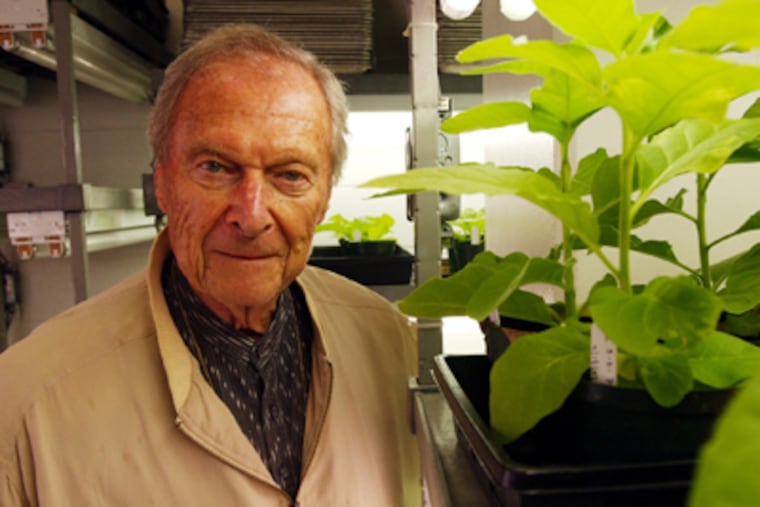Hilary Koprowski, polio vaccine pioneer, dead at 96
Hilary Koprowski, a virologist and former director of the Wistar Institute who developed the first polio vaccine and helped improve the rabies vaccine for humans, has died.

Hilary Koprowski, a virologist and former director of the Wistar Institute who developed the first polio vaccine and helped improve the rabies vaccine for humans, has died.
Koprowski, who was 96 and had been in declining health in recent months, died Thursday of pneumonia at his home in Wynnewood, according to his son Christopher Koprowski, chief of radiation oncology at the Helen F. Graham Cancer Center at the Christiana Care Health System.
"Hilary Koprowski left an enduring mark on medical science and the health of humankind, and his many accomplishments serve as a testament to his legacy," said Russel E. Kaufman, president and chief executive officer of the Wistar Institute.
Koprowski raised Wistar's profile during his tenure as director from 1957 to 1991. He then became director of Biotechnology Foundation Laboratories Inc. at Thomas Jefferson University, and was still going to the office two years ago, Christopher Koprowski said. However, his relationship with both employers turned rancorous at the end. He was fired by Wistar in 1991 amid financial problems and later filed age-discrimination claims. He fought Jefferson in court in 2010 over office space after his grant funding declined. That suit was dropped and he left in 2011.
"He was charismatic, brilliant beyond anyone else I have ever met," Christopher Koprowski said. "He was a visionary and he was a great leader and he was also a very controversial character."
He said people who got in his father's way found "he could run over them with a bulldozer and he could be very stubborn."
Though Koprowski was the first to develop a polio vaccine - his was an oral version that used live virus - Albert Sabin won the race to get a vaccine licensed in the United States. Later, Jonas Salk developed an injectable vaccine. The other two men became more famous, but Koprowski's work was considered groundbreaking. "He very much enjoyed the fact that he did not achieve the fame of Salk or Sabin," his son said. "He said that that would have stifled him scientifically and invaded his privacy."
A discredited theory blamed clinical trials of his polio vaccine in the Congo for providing the bridge from chimps to humans for the AIDS virus. Scientific experts conclusively debunked the theory in 2001.
Christopher Koprowski said his father had a "kernel of great modesty" about his work. "He didn't think that he was as brilliant as he was. He always would claim to me that he got where he was through hard work purely."
Under Koprowski's leadership, a Wistar release said, scientists there developed the rubella, or German measles, vaccine and a more effective and less painful vaccine for people exposed to rabies.
In the 1970s, Koprowski and fellow scientists developed a technique to produce monoclonal antibodies, which are now used to fight cancer. At Jefferson, he was working on using plants to produce vaccines.
Koprowski was born in Poland and was, his son said, both an academic and a musical prodigy, playing piano. He spoke four languages by age 5. Later, he went to the Warsaw Conservatory and medical school at the same time. He met his future wife, Irena Koprowska, in medical school. They had been married 74 years when she died last year.
The two fled Europe to Brazil in 1939 during World War II. The only work he could find was teaching piano, until he got a chance to study viruses with the Rockefeller Foundation. That is how he became a virologist, his son said. He moved to the United States in 1944 and started working at Lederle Laboratories soon after. It was there that he began working on the polio vaccine.
He maintained his love of music and played the piano into his 80s. He kept a grand piano at Wistar and played it during holiday parties. He began composing classical music with modern harmonies late in life.
Suzanne Jones was his assistant and office manager for 40 years, but, over the last 20, she said, he called her his boss. "He was the last of the great Renaissance men," she said. "He was a great scientist, a great man, and a great boss."
Over the course of his career, Koprowski published more than 875 scientific publications. He was a member of the National Academy of Sciences and the American Academy of Arts and Sciences.
Survivors include another son, Claude. The family plans a private commemoration of his life.